AN ETERNAL MODERNITY1
Alfonso Crespo
 FORWARD
FORWARD
 DOWNLOAD
DOWNLOAD
 ABSTRACT / KEYWORDS / ARTICLE / FOOTNOTES / BIBLIOGRAPHY / ABOUT THE AUTHOR
ABSTRACT / KEYWORDS / ARTICLE / FOOTNOTES / BIBLIOGRAPHY / ABOUT THE AUTHOR
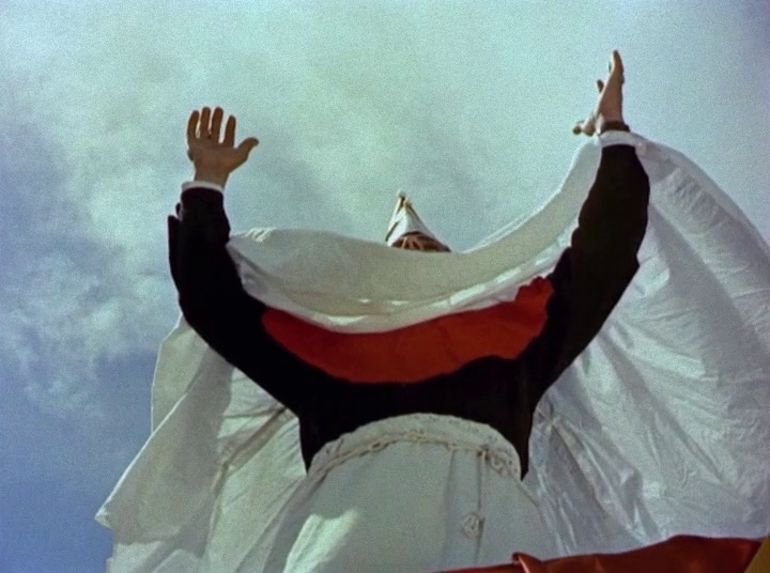
Whatever the tail with which one begins unravelling the skin of the best contemporary Portuguese cinema, it seems to lead to Acto da Primavera (1962-63), ‘the film where everything started’ in words of João Mário Grilo (GRILO, 1999: 129), to that place where a filmmaker recovered his dignity and two others, Antonio Reis and Paulo Rocha, received some kind of first communion. But what was started with Acto da Primavera? It seems difficult to define. Perhaps Oliveira, one of the filmmakers who cited it the most, would like to hear or read it in Deleuze’s concepts. Based on the idea of modern cinema as the fracture of the ‘beautiful totality’ of the classic – whose mise en scène was undertaken by the totalitarian states-, Deleuze once referred (DELEUZE, 1986: 381-389) to the ages of cinema by relating them to Serge Daney and Alois Reigl, the 19th and the 20th century, cinema and painting. This provides a tabula rasa that forces to return to the origins. Deleuze said: ‘Start by seeing’, start by perceiving one image, one sound, by reading them… because it is necessary to recover from a blindness, a deafness, both which hindered to realize that the concentration camps were the secret behind the door. This pedagogy, which was famously applied to the cases of Godard and Straub by the film critic, corresponded in Reigl’s periodization of plastic art to the purpose of ‘spiritualizing nature’, making reference to an eye that assumes the flatness of the image and becomes a psychic eye, a spiritual eye. When Joao Bénard da Costa was asking himself –in Cinema Português?, Manuel Mozos, 1997– about that familiar look that makes the best Portuguese cinema some kind of fragile and anonymous uninterrupted film composed by images with no depth, stories without phycology or recurrent thematic motives, he probably had in mind this primitive and modern overture by his friend Oliveira.
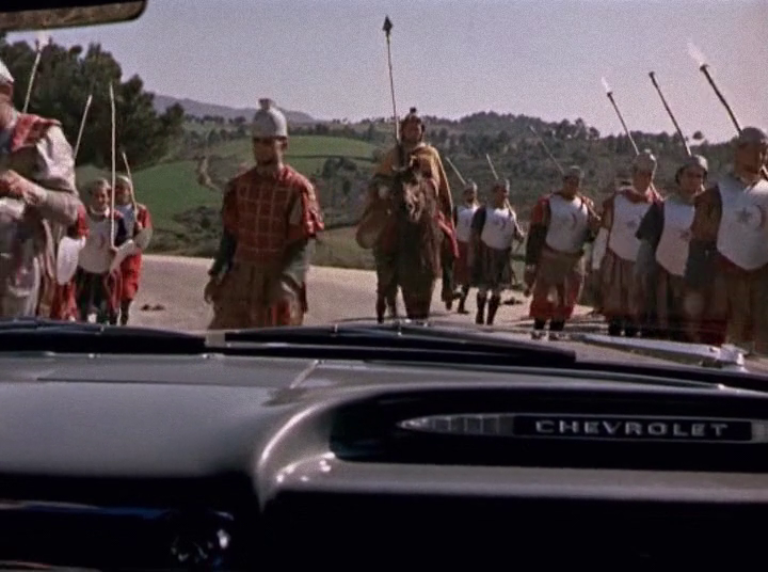
Thus, it could be said that Acto da Primavera starts above all a pedagogy, a discipline, which marked and still marks Portuguese cinema. Therefore, to begin with, we are here encoding a ‘before the style’ which translates what the poet Reis found romantic about the film (REIS, 1964): ‘its very allegoric, very symbolic, even laic and realistic mystic thematic’, ‘the colour scheme as symbolic, chaste, ‘cut’ with no relief or mannerism in relation to the natural colours’, ‘the monody of the word and its plasticity’, ‘the appreciation of the archaic, of the anachronism, of a certain medieval alchemy, even of magic’, ‘the simplicity of the film, […] its immature state’, ‘a pictorial atmosphere that substantially returns to a primitive sphere, where there is something angular, somehow barbarian and bittersweet’…We could complete, together with Deleuze, Daney and Riegl, that what Acto da Primavera finally announces is that once cinema loses its capacity to embellish nature, it has to humbly admire again the beauty of things, which mysteriously is placed upon the world, the words and men.
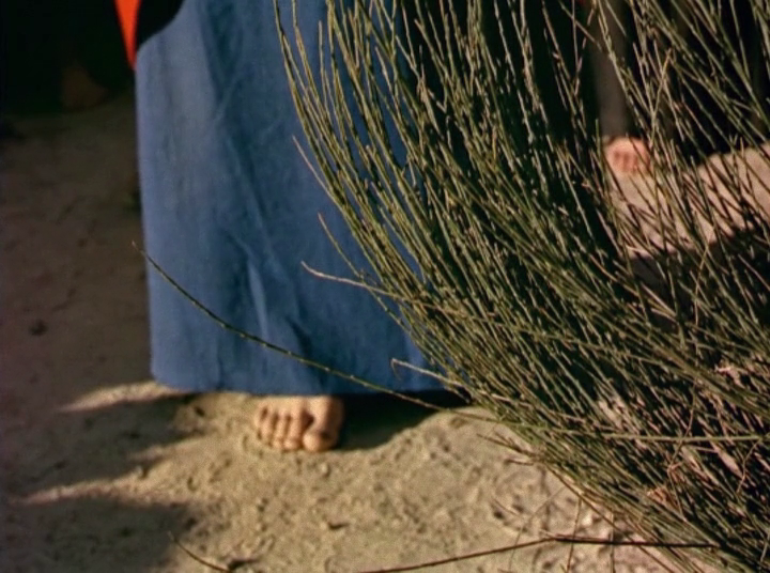
In this process, the cinematic machines reveal themselves, gaining the trust of the inhabitants of Curalha for a project that explicitly transcends the ethnographic component and finds its essence in the penetration of archaeological layers: Christ’s life, his representation according to a 16th century auto sacramental, the anachronistic backlash that inaugurates the cinematographic medium that contains and merges all. Talking about documentaries and fiction reduce the debate and domesticates a combat. When António Reis accomplishes his project for the Museu de Imagem e Som, germ of Trás-os-Montes, he will point out the difficulty of prefiguring the results of some cinematic works based on similar collisions (REIS, 1974: 24-25): ‘They implied a hand-to-hand combat with ancestral and modern forms, between wolves and a Peugeot 504, between Neolithic ploughs and gas bottles’2. Ideologically far from Oliviera, Reis and Cordero will simply go beyond the perforating gesture, which in his own words (REIS, 1977) will stop to see Christians and begin to see druids.
Assuming that this latency, as a form of maieutic exercise, was awakened by Acto da Primavera, the team of filmmakers enriched the educational practice, which they concentrated and poetically incarnated, by reinforcing the idea of the reencounter and resurrection of the real before its transfiguration. A look that thinks, again, rather than a style [‘António Reis was explaining nothing, he was not analysing. He was looking, and it is a look of huge intensity’3, comments António Bélem Lima (NEVES, coord., 2014: 177)] that Reis and Cordeiro highlighted in their cinema with the movement of children who discover life –the astonishment towards the world- in some ludic and thrilling sequences which lead to the redolent visit-invasion of the Observatorio astronómico da Ajuda in Rosa de Areia (1989). Ana the matriarch, in the homonymous film made in 1982, precisely mentioned the stars that continue to illuminate once extinguished: their light enlightens us without being our destiny. However, this will no longer be Reis’ and Cordeiro’s night, but that of Pedro Costa, who, with his elders, will find in other latitudes his particular way of being contemporary (AGAMBEN, 2009: 18-29): navigating in the darkness of the present and interpolating other times to his own –pasts which never stop passing- in order to read History against the grain.
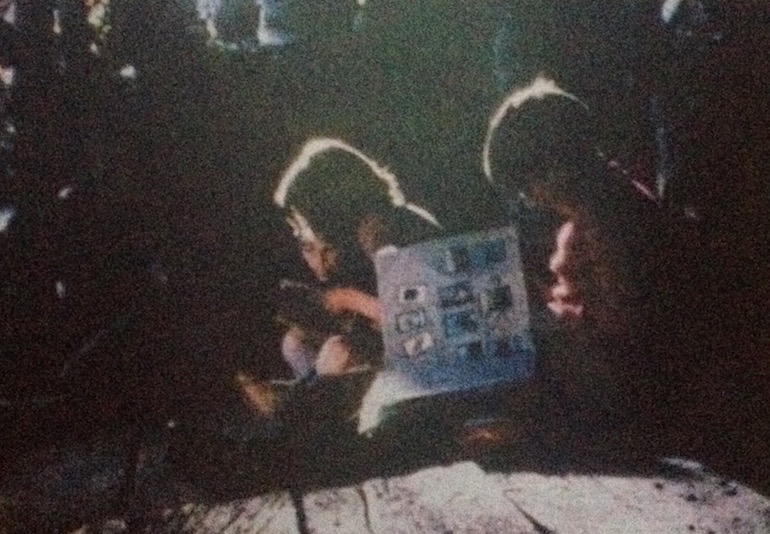
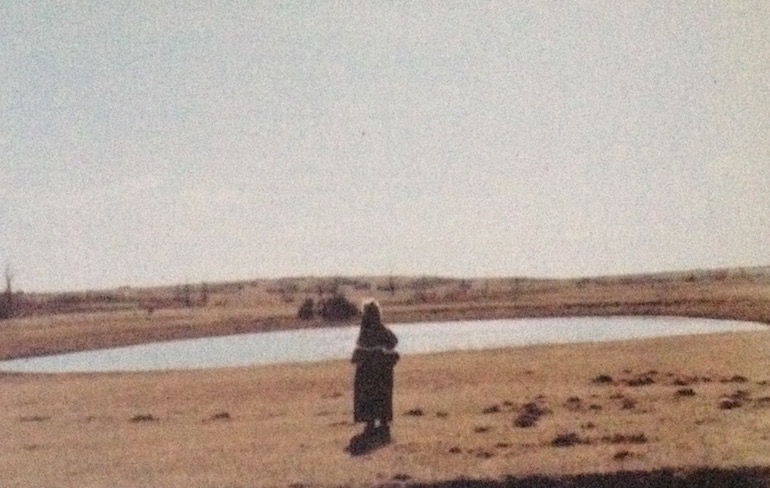
Below: Ana (António Reis y Margarida Cordeiro, 1976)
Save what is condemned to disappear –since cinema allows it- to later highlight that faded and sepulchral copy of the real through montage, which pulls out from the irreversible time a very different one, made out of survivals and anachronisms, so human that it disassembles, lyrical intensifier of the games of imagination and memory. This time recalls the spectator of the initial perplexity of the filmmaker towards the ancestral rite, which has been wounded to death. The description would work for such different movies as Acto da Primavera (1962-63), Mudar de Vida (1966), Vilarinho das Furnas (1970), Trás-os-Montes (1976), Veredas (1978), O Movimiento das Coisas (1985)…: for Oliveira, Rocha, Campos, Reis/Cordeiro, Monteiro, Serra… All of them, and some others, are related through certain primary gestures of the camera, the panoramas, which introduce a world rather than a story, the rituals, and the unconscious poetic heritage, which transmits a virginal speech, as if it had been recently segregated from the natural noise. Of such attentive-to-time and against destruction cinema is known to draw physical and metaphysical maps. Its main subjects acted within a strange and recidivist secret society that constantly seemed to send encoded messages to one another through Acácio de Almeida. The existence itself of a film such as Encontros (Piere-Marie Goulet, 2006), where all this inaugural grammar is concentrated and windows are slightly opened over a landscape assaulted by the testimonies and the voices of the passeurs and voyageurs filmmakers (EISENSCHITZ, 2011: 48-52), explains better than any discourse the alliance between pedagogy and poetics, which characterizes this structural trace of Portuguese Cinema that offered eyes and ears for those who were not seen or heard (even though the relation between the filmmakers and the locals was one of lights and shadows).
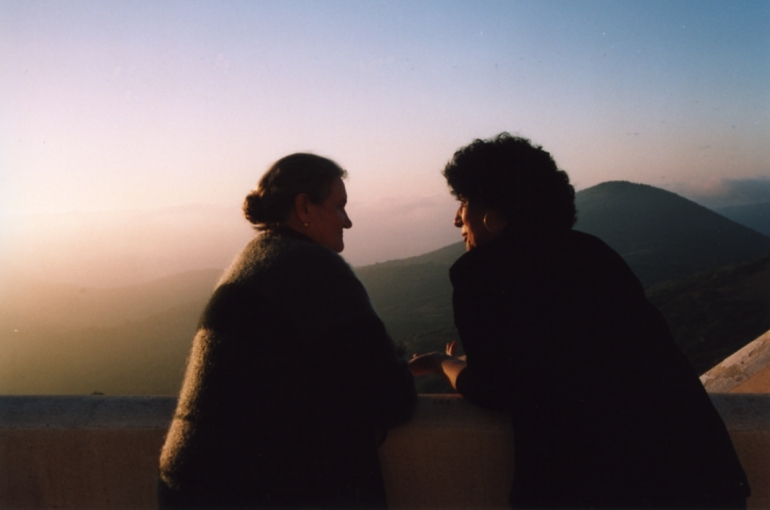
We are thus not far from an idea of transmission, mainly of an attitude. Perhaps deep inside of a miracle, which is necessary to see with one’s own eyes, as happened to Reis and Rocha in Oliviera’s shooting or to Joaquim Pinto in the beaches of Furadouro, and later to Giacometti while facing the images and songs of Mudar de Vida. Witnesses, like Monteiro of the seminal teachings of Jaime (António Reis, 1974) regarding the way of preserving a singular fate and lead it to the collective history of the forms, and further in his career, of the contagious naturalness of Uma Pedra no Bolso (Joaquim Pinto, 1988). Were they chances rather than influences? Probably, but chances, as João Bénard da Costa tells in O Som da Terra a Tremer (Rita Azevedo Gomes, 1990), are required to be deserved. Were they fulfilled desires? Certainly as well, like that of Paulo Rocha while shooting the loads dragging the fishing boats as he had seen in his childhood, and that only could be accomplished later, last minute rescue, by António Campos in Gente da Praia de Vieira (1976). The key could simply lay on the fact that such a will of regeneration of the primary potentials of cinema always summons the notions of community, considering that the efforts of a single individual can not cover it completely, and of communion, joint pleasure as that enjoyed by an autonomous part of the same body.
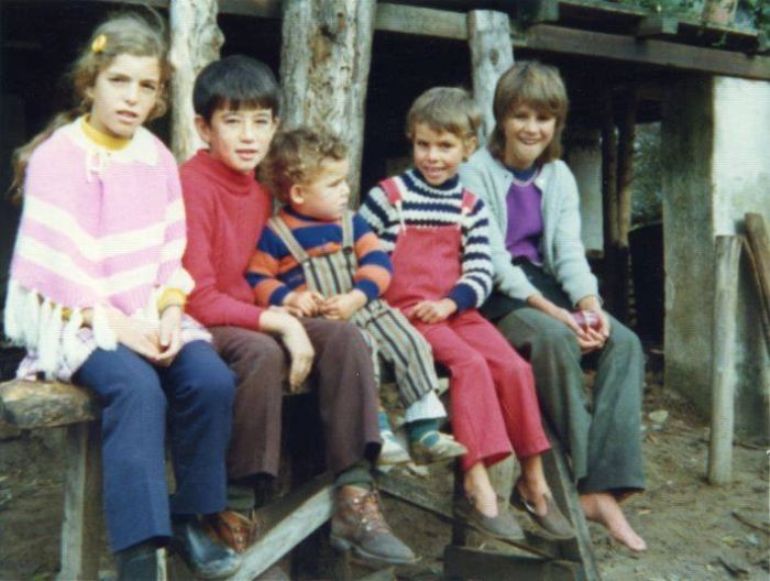
Regarding the style, however, we would be missing another fertile consequence of Acto da Primavera where Oliviera attempted the restitution to the sacred and the mysterious through the image (the word included, as it is known); An ambiguous supplement of epiphany and ascension, but of seduction and deception as well. We are talking about another edge of the same pedagogy, which notices that cinema existed before its own invention, below other forms, in the experience of one who contemplates and conceives the world in its constants of movement and fixity – matter and memory, this is to say that cinema was preceded by a vast repository of ideas and gestures, which would be later transfigured and praised. To be able to start again, it was therefore necessary to nourish from the legacy of other arts rather than from a decadent concept of cinematographic representation. Thus the fact that all acts and affections had already been fixed on centuries of theatre, literature or painting, was not an obstacle for cinema to blow into them a last breath, as similarly proposed in films such as O Pintor e a Cidade (1956) by Oliviera or O Construtor de Anjos (1978), by Luís Noronha da Costa.
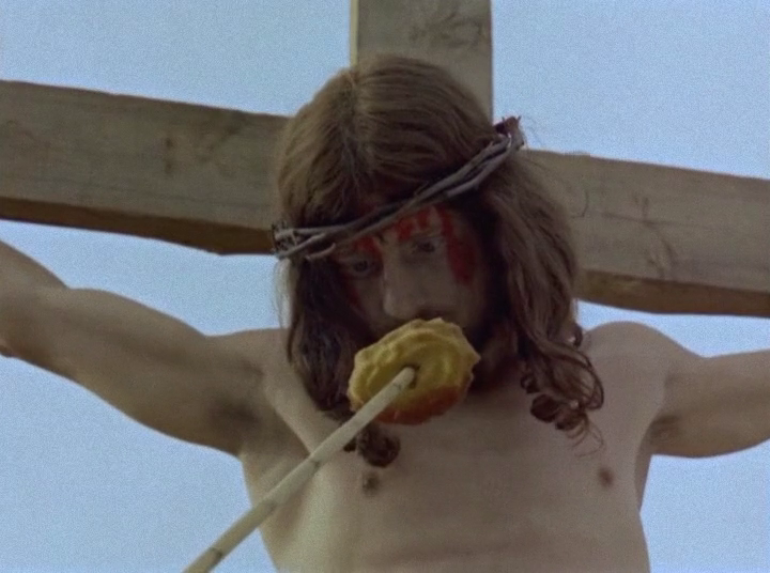
The deepest movement of cinema only arises between shots, leit motiv of Acto da Primavera, which is transmitted by Oliviera while opening the distant proximity between past and present, the ordinary and the fantastic, life and death. It this sense, it is significant that this autocratic and marginal Oliviera is described by Paulo Rocha and António Campos as an artist pursuing for the exact trace. Curiously, they didn’t realize that they were simultaneously explaining themselves, facing the future, concurrently describing their own exile and their desire, similar in intensity, of colouring fiction with the real. ‘Being simultaneously as concrete as formal’4, thus Rocha validated the plus he admired in the Oliveira of O Pão, Acto da Primavera and A Caça, by enclosing a place beyond transparency, which indicated that a filmmaker should not be content with being an illusionist, because his destiny was rather related to that of a demiurge, opened to chance and vertigo towards the materials within its reach, ‘A bizarre number of possibilities’5 (ROCHA, 1995: 125-6).
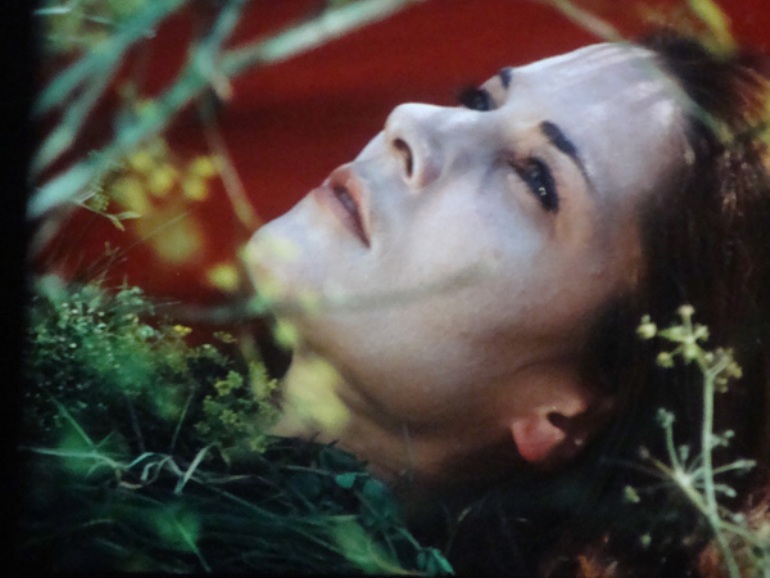
A fertile sense of collage here resounds, when dispossessed of semantic vices and historical restrictions, since the work combines elements of different origins, overcoming the illusion of originality through a work that highlights the difference of what is apparently a repetition. In Acto da Primavera is an impurity projected to the future, time of conjugation of its end, bud of life, Godardian resurrection of the image through the remnants of the intractable archives (a threatened future like that of the new born in Veredas or the couple of Mudar de Vida). According to this more aesthetic than spiritual creed, one could better conceive the ostensible turn that Rocha begins in A Pousada das Chagas (1972) –the ‘modernist auto’ (ROCHA, 1995: 135) that revitalizes The Museu de Óbidos through texts, spaces and suffering bodies distilling their humours, desires and energies-, and concludes in Si fosse ladrão… roubaba (2013). It is about a free celebration of the virtuality of filmic legacy itself, with its broken sutures and already inserted in the indistinguishable amalgam of work and life from which one continues to learn; also in the reappropiation of the popular culture as resistance in the early Monteiro; or when using him to consider the illuminations of José Manuel Costa who observed that the films by Campos ‘are made of everything’, ‘a cinema that affirms and denies itself as cinema’6 (COSTA, 2000: 67, 48). It was precisely Campos, who in the also pioneer A Invenção do Amor (1965) would expose, with a similar critical and modern sense as Oliviera, the rest of machines that accompanied the camera, those sound recorders which the daring lovers were spied with, the resonant sources from which the counterpoints of some of his richer and more fertile films, such as Gente da Praia de Vieira, were orchestrated, where cinema appears as the bifrontal Janus that it is: on face fixed to the present, the testimonies, the denunciations, the opinions, the staging; the other, turned towards the past, exhuming the memories of the inhabitants of a zone based on the remontage of the cinema of Campos, almost as lost, distant and fragile as the memories of the earliest pioneers.
What is, then, started with Acto da Primavera? Nothing that had not started already. In this film, cinema is publicly celebrated, its discipline, its labour, the generosity of its intimate functioning when it is covered by an overflying morality; its inviting vocation as crucible of the most diverse materials. Hence, it congregates a myriad of inclinations and its spectators feel fortunate, almost destined.
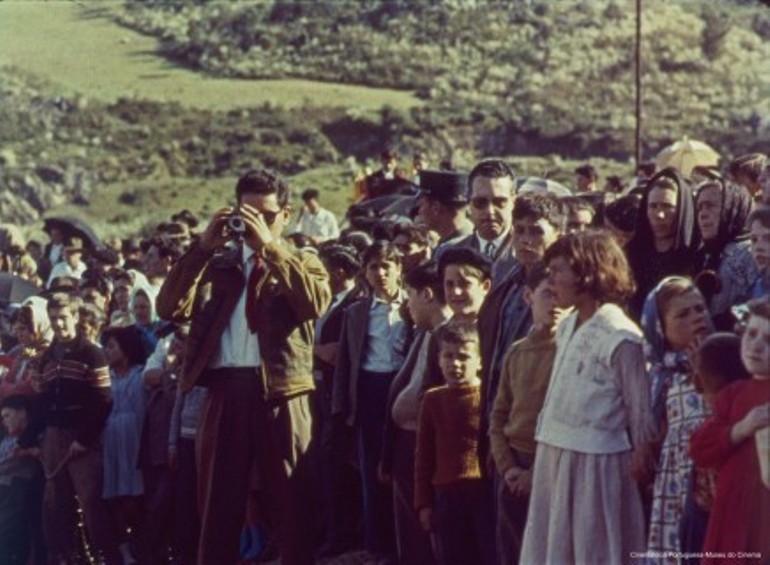
FOOTNOTES
1 / This text would not have been possible without the generosity of Francisco Algarín Navarro and Lumière's friends.
2 / In the original: ‘Implicarão uma luta corpo-a-corpo com formas ancestrais e modernaças, entre lobos e Peugeot 504, entre arados neolíticos e botijas de gás’.
3 / In the original: ‘António Reis não foi explicar nada, não foi fazer análises. Foi olhar, e é um olhar de uma grande intensidade’.
4 / In the original: «Ser ao mesmo tempo tão concreto e tão formal».
5 / In the original: ‘Uma quantidade de posibilidades bizarras’.
6 / In the original: «São feitos de tudo», «um cinema que se afirma e que se nega como cinema».
ABSTRACT
The ascendency of Acto da Primavera (1962-63) by Manoel de Oliviera, in different generations of filmmakers, places the film in a privileged place in the history of Portuguese cinema. This influence, which transcends time and individual poetics, is here clarified with the notion of pedagogy –applied by the critic Serge Daney to the cases of Godard and Straub, and theoretically broadened later by the philosopher Gilles Deleuze- that followed the war trauma in the mid-20th century and the consecutive deterioration of the idea of the cinematic classic. Therefore, certain precepts assumed by Oliviera in this film, such as the ethnographic respect and the archaeological will towards a lyrical transcendence through imagination and memory games, can be followed in the work of some of the main modern and contemporary Portuguese filmmakers such as Paulo Rocha, António Reis y Margarida Cordeiro, António Campos, João César Monteiro, Joaquim Pinto, Pedro Costa or Manuela Serra. However, Acto da Primavera, whose baseline is the registration of the annual representation of the Passion of Christ according to an auto from the 16th century, staged by the inhabitants of Curalha themselves, also teaches that cinema is rather related to the arts that precede it –a repository of forms, ideas, gestures and affects- than to any attempt of assimilation of a language or grammar. Following, for example, the fertile concept of collage as a work that assembles different elements and overcomes the illusion of originality by highlighting the difference in what seems a repetition, Oliviera’s proceeds could be related to that of other filmmakers such as Paulo Rocha (A Pousada das Chagas), António Campos (Gente da Praia de Vieira) or João César Monteiro (Veredas).
KEYWORDS
Manoel de Oliveira, Acto da Primavera, pedagogy, Serge Daney, Gilles Deleuze, Alois Riegl, Paulo Rocha, António Reis, Margarida Cordeiro, António Campos, João César Monteiro, Joaquim Pinto, Pedro Costa, Manuela Serra, collage, archaeology, ethnography, transcendence.
BIBLIOGRAPHY
AA.VV. (2000). Antonio Cámpos. Lisboa. Cinemateca Portuguesa-Museu do Cinema.
AA.VV. (1981). Manoel de Oliveira. Lisboa. Cinemateca Portuguesa.
AGAMBEN, Giorgio (2011). ¿Qué es lo contemporáneo?. Desnudez (17-30). Buenos Aires: Adriana Hidalgo editora.
DANEY, Serge, OUDART, Jean-Pierre (1977). 'Trás-os-Montes. Entretien avec António Reis'. Cahiers du Cinéma, 276, 37-41.
DELEUZE, Gilles (2014). Soberanía, disciplina y control en los regímenes de imágenes. El poder. Curso sobre Foucault (381-389). Buenos Aires: Cactus.
EISENSCHITZ, Bernard (2011). Encontros, de Pierre-Marie Goulet. Trafic, P.O.L., Paris, 48-52.
FOLGAR, José María, GONZÁLEZ, Xurxo, PENA, Jaime (coord.) (2004) . Manoel de Oliveira. Santiago de Compostela. Xunta de Galicia, Concello de Santiago de Compostela, Universidade de Santiago de Compostela.
GRILO, João Mário (2006). O Cinema da Não-Ilusão. Histórias para o cinema português. Lisboa. Livros Horizonte.
NEVES, José (coord.) (2014). O Lugar dos Ricos e dos Pobres no Cinema e na Arquitectura em Portugal. Oporto. Dafne Editorial.
NICOLAU, Joao (coord.) (2005). João César Monteiro. Lisboa. Cinemateca Portuguesa-Museu do Cinema.
PARSI, Jacques, BAECQUE, Antoine de (1996). Conversations avec Manoel de Oliveira. Paris. Cahiers du cinéma/Éditions de l’étoile.
PARSI, Jacques (dir.) (2001). Manoel de Oliveira. Paris. Centre Pompidou, Edizioni Gabriele Mazzotta, Torino Film Festival.
REIS, António (1964). Flashback sobre ‘Acto da Primavera’. Lumière. From: http://www.elumiere.net/especiales/oliveira/01_web/15_reis_oliveira.php
REIS, António (1974). 'Arquitectura do Nordeste'. Cinéfilo, abril, 24-25. A CUNHA, Paulo (2009). O Museu da Imagem e do Som. Catálogo Filminho 2009 - Festa do Cinema Galego e Português. VN Cerveira/Tomiño,80-85.
SILVA, Jorge (coord.) (1996). Paulo Rocha. O Rio do Ouro. Lisboa. Cinemateca Portuguesa-Museu do Cinema.
TURIGLIATTO, Roberto (coord.) (1995). Paulo Rocha. Turín. Lindau.
ALFONSO CRESPO
Film critic. Graduated in Audiovisual Communication by Sevilla University and Master's Degree of History and Aesthetics of Cinematography in Valladolid's. Author of the book Un cine febril. Herzog y El enigma de Kaspar Hauser (Metropolisiana, Sevilla, 2008), and coordinator of El batallón de las sombras. Nuevas formas documentales del cine español (Ediciones GPS, Madrid, 2006). He writes about cinema, literature and theatre in Diario de Sevilla, where he contributes since 2000 and edits its blog «News from Home». Contributing writer on various magazines(Letras de Cine, Cámara Lenta, Lumière, So-Film España) and specialized books (Claire Denis. Fusión fría).
Nº 6 THE POETRY OF THE EARTH. PORTUGUESE CINEMA: RITE OF SPRING
Editorial. The poetry of the earth
Gonzalo de Lucas
DOCUMENTS
The soul cannot think without a picture
João Bénard da Costa, Manoel de Oliveira
A certain tendency in Portuguese cinema
Alberto Seixas Santos
To Manoel de Oliveira
Luis Miguel Cintra
The direct experience. Between Northern cinema and Japan
Paulo Rocha
Conversation with Pedro Costa. The encounter with António Reis
Anabela Moutinho, Maria da Graça Lobo
ARTICLES
The theatre in Manoel de Oliveira's cinema
Luis Miguel Cintra
An eternal modernity
Alfonso Crespo
Scenes from the class struggle in Portugal
Jaime Pena
Aesthetic Tendencies in Contemporary Portuguese Cinema
Horacio Muñoz Fernández, Iván Villarmea Álvarez
Susana de Sousa Dias and the ghosts of the Portuguese dictatorship
Mariana Souto
REVIEWS
MARTÍNEZ MUÑOZ, Pau. Mateo Santos. Cine y anarquismo. República, guerra y exilio mexicano
Alejandro Montiel

